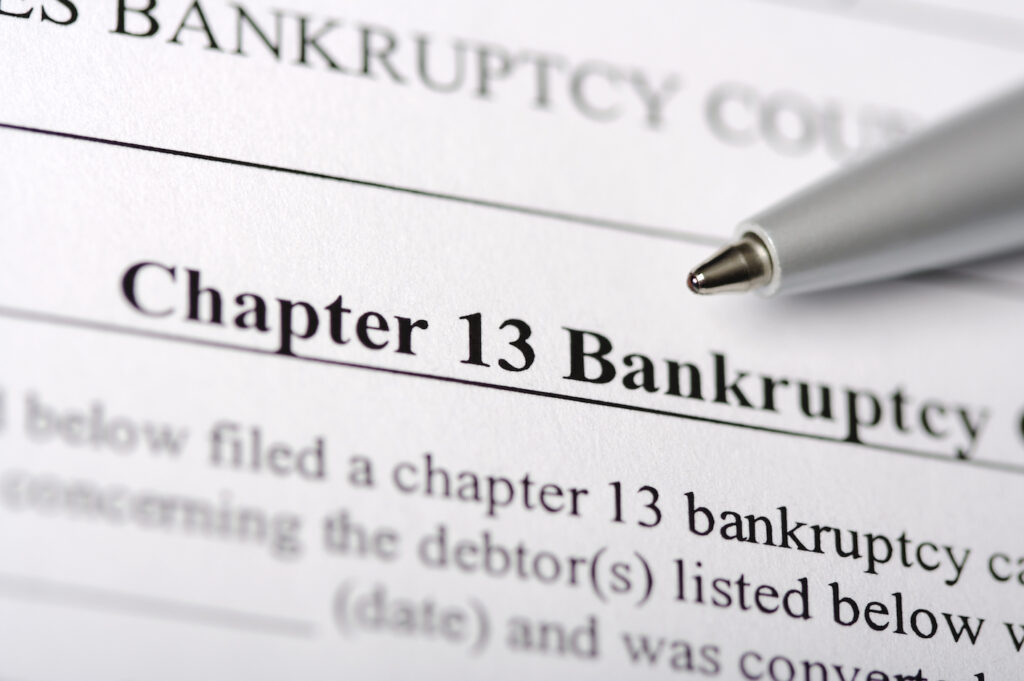
2017 Amendments to Bankruptcy Rules Do Not Permit Lien Avoidance Through Chapter 13 Plan
The U.S. Bankruptcy Court for the Eastern District of North Carolina recently rejected a debtor’s argument that the 2017 Amendments to Rules 3012 and 3015 of the Federal Rules of Bankruptcy Procedure permitted her to avoid a creditor’s lien through her confirmed chapter 13 plan. In re Sherrell, No. 19-05254-5-DMW, 2021 Bankr. LEXIS 3378, at *7–8 (Bankr. E.D.N.C. Dec. 10, 2021).
Background
The debtor financed the purchase of a vehicle with the bank and later filed a voluntary petition for relief under Chapter 13. She scheduled the bank as holding a secured claim, estimating that approximately $2,000 in equity in the vehicle above the bank’s lien. Id. at *2. In her amended Chapter 13 plan, she proposed to treat the bank’s claim as fully secured and to repay it over the life of the plan with interest. The plan was ultimately confirmed, and the bank did not object to confirmation. However, because the bank never filed a proof of claim, the trustee did not make any disbursements to it under the plan. A little more than two years after the plan was confirmed, the debtor sold her residence, and the Court approved a consent order between the debtor and the Chapter 13 trustee, in which “the Debtor made a lump sum payment to the Trustee, presumably from the proceeds of the sale of her residence and paid all allowed claims in full.” Id. at *3. The Court then entered the debtor’s discharge and closed the case. Shortly thereafter, the debtor moved to reopen her case in order to file a motion against the bank seeking sanctions in the form of a cancellation of the bank’s lien as well as damages for alleged violations of the confirmed plan and the discharge. Id. at *3-4. According to the Debtor, the bank had contacted her following the entry of her discharge “about repossessing the Vehicle and has refused to release its lien against the Vehicle.” Id. at *3.
2017 Amendments to the Federal Rules of Bankruptcy Procedure
On December 1, 2017, several amendments to the Federal Rules of Bankruptcy Procedure went into effect. The centerpiece of these amendments was the mandate of a form Chapter 13 plan nationwide, with districts permitted to substitute the national form for a local form. See Fed. R. Bankr. P. 3015(c); 3015.1. The Rules were also amended to permit valuation of secured claims under 11 U.S.C. § 506(a) to be determined through a Chapter 13 plan. Fed. R. Bankr. P. 3012(b). Additionally, any valuation of a secured claim determined through a Chapter 13 plan is “binding on the holder of the claim, even if the holder files a contrary proof of claim or the debtor schedules that claim, and regardless of whether an objection to the claim has been filed.” Fed. R. Bankr. P. 3015(g)(1).
General Rule: Liens Pass Through Bankruptcy Unaffected
The debtor argued that the terms of her confirmed Chapter 13 plan were binding on the bank, regardless of its lack of participation in her case, and that accordingly, the bank’s lien in the vehicle was invalidated when the property of her bankruptcy estate re-vested in her following confirmation of the plan, citing 11 U.S.C. § 1327. The Court observed that the debtor’s argument was foreclosed by “the sound reasoning and precedent” of the Fourth Circuit’s holding in Cen-Pen Corp. v. Hanson, 58 F.3d 89 (4th Cir. 1995).
The chapter 13 debtors’ plan provided that if a secured creditor failed to file a proof of claim, its lien would be voided upon entry of the debtors’ discharge. Cen-Pen, 58 F.3d at 93. The debtors classified a creditor with a lien in their home as holding an unsecured claim, and the creditor neither filed a proof of claim nor objected to their plan. Id. at 91–92. Following confirmation of the plan and the entry of the debtors’ discharge, the creditor initiated an adversary proceeding to determine the validity of its lien in the debtor’s residence. Id. at 92. The bankruptcy court ruled in favor of the debtors, holding that “confirmation of the plan vested the residence in the [debtors] free and clear” of the creditor’s lien. Id. The district court reversed, holding that any interest in the debtors’ residence vested under their confirmed plan was subject to the creditor’s preexisting lien. The Fourth Circuit affirmed, noting first that the debtors’ argument “ignores the general rule that liens pass through bankruptcy unaffected.” Id. at 92 (citing Dewsnup v. Timm, 502 U.S. 410, 418 (1992)). If a debtor wishes to “extinguish or modify a lien during the bankruptcy process, some affirmative step must be taken toward that end.” Id. In that case, the affirmative step required was the initiation of an adversary proceeding to determine the validity, priority, or extent of the creditor’s lien. Id. (citing Fed. R. Bankr. P. 7001(2)). Furthermore, the Court observed, a confirmed Chapter 13 plan is only res judicata “as to issues that can be raised in the less formal procedure for contested matters . . . .” Id. at 93. Thus, the creditor’s lien remained valid and enforceable notwithstanding the language in the debtors’ Chapter 13 plan because the debtors failed to initiate an adversary proceeding to challenge the validity of the creditor’s lien.
Discussion
The Court determined that the debtor’s arguments under § 1327 were identical to those presented to (and rejected by) the Fourth Circuit in Cen-Pen. Similarly, the debtor had not initiated an adversary proceeding to challenge the validity of the bank’s lien in the vehicle. Sherrell, 2021 Bankr. LEXIS 3378, at *6. Further, the Court found the debtor’s reliance on the 2017 amendments to the Bankruptcy Rules “misplaced.” Id. at *7. The Advisory Committee notes for Rule 3012 clarified the interaction between valuation of a secured claim under a Chapter 13 plan (Rule 3012(b)) and challenging the underlying lien itself through an adversary proceeding (Rule 7001):
An adversary proceeding is commenced when the validity, priority, or extent of a lien is at issue as prescribed by Rule 7001. That proceeding is relevant to the basis of the lien itself, while valuation under Rule 3012 would be for the purposes indicated above.
Id. at *8 (emphasis in original). Finally, the Court noted that if the debtor had wished to ensure that the bank received payment on its claim under the plan, she could have filed a proof of claim on the bank’s behalf. Id. at *6–7 (citing Fed. R. Bankr. P. 3004). Since she did not, and she had reason to know that the claim had not been paid when “she ascertained the lump sum amount that would be required to pay all allowed claims in full,” id. at *7, the Court held that the debtor could not “rely on the proposed, but unfulfilled, repayment provision in the Plan to seek the windfall of an unencumbered vehicle after the Trustee did not remit any payments to [the bank].” Id. at *7. Thus, the Court held that the confirmed Plan discharged only the debtor’s in personam liability on the loan to the bank but did not void or otherwise affect the bank’s lien in the vehicle. Since the bank remained entitled to look to the vehicle for repayment of its claim, it did not violate the Order confirming the Plan or the debtor’s discharge in seeking to repossess the vehicle, and the debtor’s motion for sanctions was denied. Id. at *8.
Conclusion
Secured creditors are generally only required to file a proof of claim in a Chapter 13 case if they wish to receive distributions under the debtor’s plan. However, that process is purely voluntary, and a secured creditor is entitled to forego participation in the debtor’s plan and look solely to its collateral for repayment of its claim. While the 2017 amendments to the Bankruptcy Rules simplified and streamlined the requirements for filing a Chapter 13 plan, they did not abrogate preexisting procedural requirements for lien avoidance. Thus, a debtor cannot take advantage of a secured creditor’s lack of participation in a case by drafting plan language that would allow the debtor to circumvent the requirements of Rule 7001 to void a creditor’s lien without initiating an adversary proceeding to do so.

